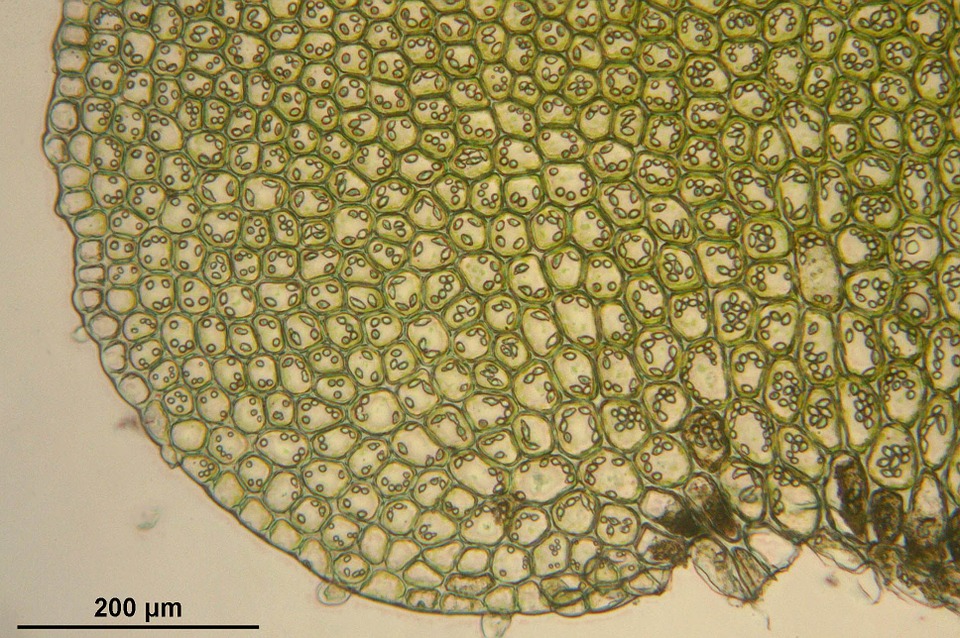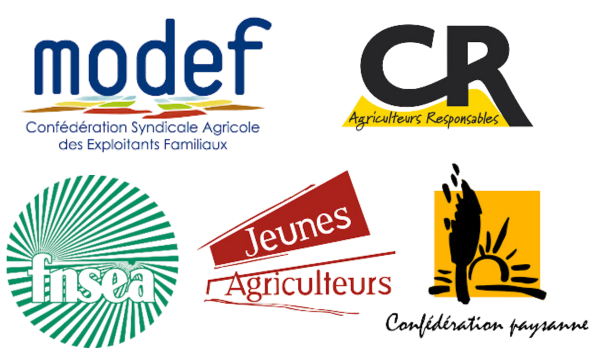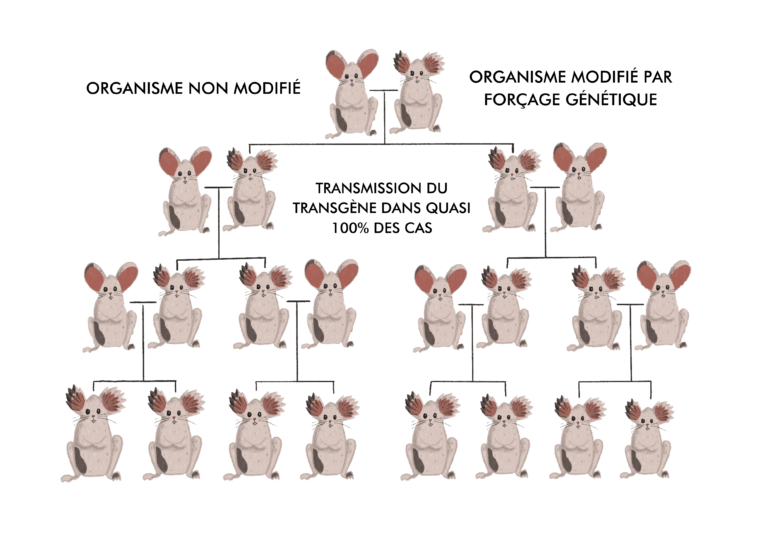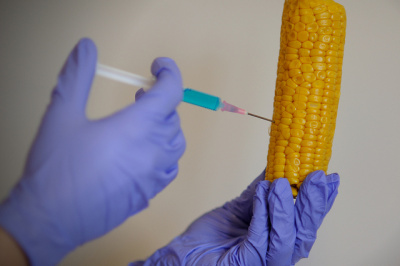Modifications génétiques : à chaque étape, des effets non-intentionnels

Une entreprise qui souhaite mettre sur le marché une variété génétiquement modifiée ne va pas modifier directement le génome d’une des variétés « élites » mais celui d’une variété plus commune. La modification obtenue sera ensuite réintroduite dans une variété commercialement intéressante. Mais pour modifier génétiquement une plante, quelle que soit la technique ou le matériel utilisé, des étapes en aval et en amont de celle de la modification sont nécessaires. Chacune de ces étapes, schématisées ici, induit des effets sur le génome, documentés scientifiquement. Et pour l’étape de modification génétique en elle-même, ces effets impliquent la recherche d’un (délicat) équilibre entre efficacité de modification et nécessité de réduire le nombre et la nature des effets hors-cible.
Inf’OGM présente de manière très schématisée le protocole théorique et une bibliographie scientifique qui documente les principaux effets sur le génome. Des mises à jour seront faites régulièrement.
Lexique : de quoi va-t-on parler ?
Ce lexique a pour objectif de guider le lecteur dans sa compréhension des étapes décrites. Les définitions données sont celles d’Inf’OGM.
Effets non intentionnels
C’est l’ensemble des impacts sur le génome liés à la mise en œuvre d’un protocole de modification génétique. Ces effets ont lieu à chacune des étapes du protocole.
Effets hors-cible
Les effets hors-cible sont les effets non intentionnels liés à l’étape de modification génétique en elle-même. Ils sont appelés ainsi car ils ont lieu ailleurs que sur l’endroit du génome théoriquement ciblé.
Mutations
Une mutation est couramment définie comme une modification de l’information génétique contenue dans un organisme. Les mutations sont héréditaires. Elles peuvent être « silencieuses », c’est-à-dire n’avoir aucune implication dans le métabolisme de l’organisme. Mais elles peuvent aussi affecter l’expression d’un ou plusieurs gènes, modifiant le métabolisme. Une même mutation peut même avoir des effets très différents selon le fond génétique et l’environnement.
Épimutations
Les épimutations appartiennent à la famille des mutations affectant l’expression d’une séquence génétique mais qui ne sont pas dues à une modification de la séquence génétique elle-même. Elles peuvent par exemple être dues à un changement de la composition chimique de briques de base de l’ADN, les nucléotides.
Dans le schéma ci-dessous, les mutations sont représentées par des points rouges et les épimutations par des points oranges (ces effets non intentionnels étant schématisés, la proportion entre mutations et épimutations n’est pas représentative).
La modification génétique est représentée par un trait rouge le long de l’ADN.











Inf’OGM, septembre 2017.
Inf’OGM remercie Yves Bertheau, chercheur de l’Inra au Muséum national d’histoire naturelle, pour ses corrections, commentaires et suggestions.
Bibliographie scientifique relative aux différentes étapes
1 – Préparation des cellules : rupture / enlèvement de la paroi extérieure
« Meiotic transmission of epigenetic changes in the cell-division factor requirement of plant cells », Meins, F. et al., (2003), Development, 130(25), 6201-6208 ;
« Transformation-induced mutations in transgenic plants : analysis and biosafety implications », Wilson, A.K. et al., (2006), Biotechnol Genet Eng Rev, 23(1), 209-238 ;
« Cell culture-induced gradual and frequent epigenetic reprogramming of invertedly repeated tobacco transgene epialleles », Krizova, K. et al., (2009), Plant Physiology, 149(3), 1493-1504 ;
« Tissue culture-induced novel epialleles of a Myb transcription factor encoded by pericarp color1 in maize », Rhee, Y. et al., (2010), Genetics, 186(3), 843-855 ;
« Recent progress in the understanding of tissue culture-induced genome level changes in plants and potential applications », Neelakandan et al., (2012), Plant Cell Reports, 31(4), 597-620 ;
« A whole-genome analysis of a transgenic rice seed-based edible vaccine against cedar pollen allergy », Kawakatsu, T. et al., (2013), DNA Research 20, 623-631 ;
« Less is more : strategies to remove marker genes from transgenic plants », Yau, Y.Y. et al., (2013), Bmc Biotechnology, 13 ;
« Extended metAFLP approach in studies of tissue culture induced variation (TCIV) in triticale », Machczyńska, J. et al., (2014), Molecular Breeding, 34(3), 845-854 ;
« Alternatives to antibiotic resistance marker genes for in vitro selection of genetically modified plants – Scientific developments, current use, operational access and biosafety considerations », Breyer, D. et al., (2014), Crit Rev Plant Sci, 33, 286-330 ;
« Advances in plant breeding strategies : breeding, biotechnology and molecular tools », Al-Khayri, J.M. et al., (2016), Springer International Publishing Switzerland.
2 – Multiplication des protoplastes
« Arabidopsis mesophyll protoplasts : a versatile cell system for transient gene expression analysis », Yoo, S.-D. et al., (2007), Nat. Protocols, 2(7), 1565-1572 ;
« Developmental stage specificity and the role of mitochondrial metabolism in the response of Arabidopsis leaves to prolonged mild osmotic stress », Skirycz, A. et al., (2010), Plant Physiology, 152(1), 226-244 ;
« An epigenetic view of plant cells cultured in vitro : somaclonal variation and beyond », Miguel, C. et al., (2011), Journal of Experimental Botany 62, 3713-3725 ;
« Stress induces plant somatic cells to acquire some features of stem cells accompanied by selective chromatin reorganization », Florentin, A. et al., (2013), Developmental Dynamics, 242(10), 1121-1133 ;
« Advances in plant breeding strategies : breeding, biotechnology and molecular tools », Al-Khayri, J.M. et al., (2016), (Springer International Publishing Switzerland).
3 – Introduction du matériel nécessaire à la modification génétique (vectorisation)
« Agrobacterium-mediated plant transformation : the biology behind the “gene-jockeying” tool », Gelvin, S.B. (2003), Microbiology and Molecular Biology Reviews 67, 16-37 ;
« T-DNA-mediated transfer of Agrobacterium tumefaciens chromosomal DNA into plants », Ulker, B. et al., (2008), Nature Biotechnology 26, 1015-1017 ;
« Cell biology : delivering tough cargo into cells », Marx, V. (2016), Nat Meth, 13(1), 37-40 ;
« Advancing crop transformation in the era of genome editing », Altpeter, F. et al., (2016), The Plant Cell 28, 1510-1520.
4 – Modification génétique
« Less is more : strategies to remove marker genes from transgenic plants », Yau, Y.Y. et al., (2013), BMC Biotechnology.
Exemples pour Crispr/Cas9 :
« Approaches to reduce CRISPR off-target effects for safer genome editing », Chapman, J.E. et al., (2017), Applied Biosafety, 1535676017694148 ;
« Genome editing system CRISPR/CAS9 and peculiarities of its application in monocots », Gerasimovaa, S.V. et al., (2017), Russian Journal of Plant Physiology 64, 141-155.
5 – Sélection des cellules par gènes marqueurs et éventuelle excision ultérieure laissant des traces / cicatrices visibles (ex : LoxP du système Cre-Lox)
« Cre-lox-based method for generation of large deletions within the genomic magnetosome island of Magnetospirillum gryphiswaldense », Ullrich, S. et al., (2010), Applied and Environmental Microbiology 76, 2439-2444 ;
« Suitability of non-lethal marker and marker-free systems for development of transgenic crop plants : present status and future prospects », Manimaran, P. et al., (2011), Biotechnology Advances 29, 703-714 ;
« Cre-loxP-mediated recombination : general principles and experimental considerations », McLellan, M.A. et al., (2011), In Current Protocols in Mouse Biology (John Wiley & Sons, Inc.) ;
« Less is more : strategies to remove marker genes from transgenic plants », Yau, Y.Y. et al., (2013), BMC Biotechnology ;
« A markerless protocol for genetic analysis of Aggregatibacter actinomycetemcomitans », Cheng, Y.-A. et al., (2014), Journal of the Formosan Medical Association 113, 114-123.
6 – Régénération des plantes
« Regeneration in plants and animals : dedifferentiation, transdifferentiation, or just differentiation ? », Sugimoto, K. et al., (2011), Trends in Cell Biology 21, 212-218 ;
« An epigenetic view of plant cells cultured in vitro : somaclonal variation and beyond », Miguel, C. et al., (2011), Journal of Experimental Botany 62, 3713-3725 ;
« Recent progress in the understanding of tissue culture-induced genome level changes in plants and potential applications », Neelakandan, A.K. et al., (2012), Plant Cell Reports 31, 597-620 ;
« Less is more : strategies to remove marker genes from transgenic plants », Yau, Y.Y. et al., (2013), BMC Biotechnology ;
« Cell biology : delivering tough cargo into cells », Marx, V. (2016), Nature Methods 13, 37-40 ;
« Advancing crop transformation in the era of genome editing », Altpeter, F. et al., (2016), The Plant Cell 28, 1510-1520 ;
« Plant-genome hackers seek better ways to produce customized crops », Ledford, H. (2016), Nature 539, 16-17.
7 – Rétrocroisement
« Quantitative trait locus mapping can benefit from segregation distortion », Xu, S. (2008), Genetics, 180(4), 2201-2208 ;
« Inherited variation at the epigenetic level : paramutation from the plant to the mouse », Cuzin, F. et al., (2008), Current Opinion in Genetics & Development 18, 193-196 ;
« Molecular plant breeding as the foundation for 21st century crop improvement », Moose, S.P. (2008), Plant Physiology 147, 969-977 ;
« The composition and origins of genomic variation among individuals of the soybean reference cultivar Williams 82 », Haun, W.J. et al., (2011), Plant Physiology 155, 645-655 ;
« Distorsions de ségrégation et amélioration génétique des plantes (synthèse bibliographique) », Diouf, F.B.H. et al., (2012), Biotechnologie Agronomie Société Et Environnement, 16(4), 499-508 ;
« Genetic map construction and detection of genetic loci underlying segregation distortion in an intraspecific cross of Populus deltoides », Zhou, W et al., (2015), PLoS ONE, 10(5), e0126077 ;
« Advancing crop transformation in the era of genome editing », Altpeter, F. et al., (2016), The Plant Cell 28, 1510-1520 ;
« Draft assembly of Elite inbred line PH207 provides insights into genomic and transcriptome diversity in maize », Hirsch, C.N. et al., (2016), The Plant Cell 28, 2700-2714 ;
« Unlocking a key to maize’s amazing success », Pennisi, E. (2017), Science 357, 240-240 ;
« A natural tandem array alleviates epigenetic repression of IPA1 and leads to superior yielding rice », Zhang, L. et al., (2017), Nat Commun 8, 14789 ;
« Transcriptomic analysis of short-fruit 1 (sf1) reveals new insights into the variation of fruit-related traits in Cucumis sativus », Wang, L. et al., (2017), Scientific reports 7, 2950 ;
« Promoting transcription over long distances », Catarino, R.R. et al., (2017), Nat Genet 49, 972-973 ;
« Genome-wide characterization of mammalian promoters with distal enhancer functions », Dao, L.T.M. et al., (2017), Nat Genet 49, 1073-1081 ;
« A tiling-deletion-based genetic screen for cis-regulatory element identification in mammalian cells », Diao, Y. et al., (2017), Nat Meth 14, 629-635 ;
« Rapid cloning of genes in hexaploid wheat using cultivar-specific long-range chromosome assembly », Thind, A.K. et al., (2017), Nat Biotech advance online publication ;
« MLPA-based analysis of copy number variation in plant populations », Samelak-Czajka, A. et al., (2017), Frontiers in Plant Science 8.
Séquençage
« Theoretical analysis of mutation hotspots and their DNA sequence context specificity », Rogozin, I.B. et al., (2003), Mutation Research/Reviews in Mutation Research 544, 65-85 ;
« Applications of next-generation sequencing. Sequencing technologies – the next generation », Metzker, M.L. (2010), Nature Reviews Genetics, 11(1), 31-46 ;
« Principles and challenges of genome-wide DNA methylation analysis », Laird, P.W. (2010), Nature Reviews Genetics 11, 191-203 ;
« Performance comparison of whole-genome sequencing platforms », Lam, H.Y.K. et al., (2012), Nat Biotech 30, 78-82 ;
« Next-generation sequencing platforms », Mardis, E.R. (2013), Annual Review of Analytical Chemistry, 6(1), 287-303 ;
« Next-generation sequence assembly : four stages of data processing and computational challenges », El-Metwally, S. et al., (2013), PLoS Comput Biol 9, e1003345 ;
« Sequence assembly demystified », Nagarajan, N. et al., (2013), Nat Rev Genet 14, 157-167 ;
« Low concordance of multiple variant-calling pipelines : practical implications for exome and genome sequencing », O’Rawe, J. et al., (2013), Genome Medicine 5, 1-18 ;
« Next-generation sequence assembly : four stages of data processing and computational challenges », El-Metwally, S. et al., (2013), PLoS Comput Biol 9, e1003345 ;
« Rapid evaluation and quality control of next generation sequencing data with FaQCs », Lo, C.-C. et al., (2014), BMC Bioinformatics 15, 1-8 ;
« Next generation sequencing technology : Advances and applications », Buermans, H.P.J. et al., (2014), Biochimica et Biophysica Acta (BBA) – Molecular Basis of Disease, 1842(10), 1932-1941 ;
« Systematic comparison of variant calling pipelines using gold standard personal exome variants », Hwang, S. et al., (2015), Scientific reports 5, 17875 ;
« Improving the quality of genome, protein sequence, and taxonomy databases : a prerequisite for microbiome meta-omics 2.0 », Pible, O. et al., (2015), Proteomics 15, 3418-3423 ;
« Sequencing technologies and tools for short tandem repeat variation detection », Cao, M.D. et al., (2014), Briefings in Bioinformatics, (2015), Vol16, Issue 2, 193–204 ;
« Systematic comparison of variant calling pipelines using gold standard personal exome variants », Hwang, S., et al., (2015), Scientific reports 5, 17875 ;
« Open chromatin reveals the functional maize genome », Rodgers-Melnick, E. et al., (2016), Proceedings of the National Academy of Sciences 113, E3177-E3184 ;
« Evolutionary patterns of genic DNA methylation vary across land plants », Takuno, S. et al., (2016), Nature Plants 2, 15222 ;
« Droplet barcoding for massively parallel single-molecule deep sequencing », Lan, F. et al., (2016), Nat Comm 7 ;
« Rapid cloning of genes in hexaploid wheat using cultivar-specific long-range chromosome assembly », Thind, A.K. et al., (2017), Nat Biotech advance online publication ;
« DNA damage is a pervasive cause of sequencing errors, directly confounding variant identification », Chen, L. et al., (2017), Science 355, 752-756 ;
« Genetics : DNA variants or DNA damage ? », Nawy, T. (2017), Nat Meth 14, 341-341.














